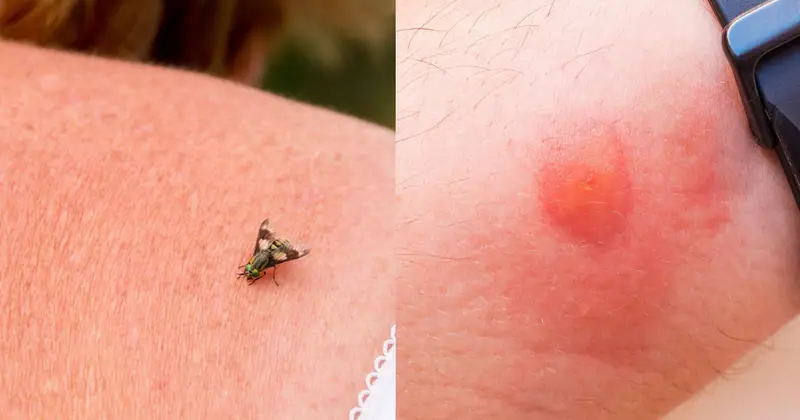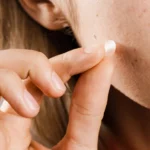
If you’ve scrolled through TikTok or beauty forums lately, you’ve probably seen people swearing by an unusual skincare hack: using pimple patches on bug bites. This trend has gained massive popularity as people search for quick relief from itchy mosquito bites and other insect irritations. But before you raid your acne stash for your next camping trip, it’s important to understand whether this bug bite patch hack is actually safe and effective.
The curiosity around repurposing hydrocolloid patches makes perfect sense. After all, both pimples and bug bites can be raised, fluid-filled bumps that we desperately want to stop touching. But the science behind each condition is quite different, and what works for one doesn’t automatically translate to the other.
Understanding Pimple Patches: The Science Behind the Sticker
Pimple patches, also known as acne patches, are primarily made from hydrocolloid material – the same substance used in medical wound dressings. These thin, translucent stickers work through a process called moist wound healing, creating an optimal environment for skin recovery while protecting the area from external bacteria and irritants.
How Hydrocolloid Patches Work
When applied to a pimple, hydrocolloid patches absorb excess fluid and pus while maintaining moisture in the skin. This creates an environment that promotes faster healing and reduces the risk of scarring. The patch also acts as a physical barrier, preventing you from picking or touching the affected area.
The magic happens at the molecular level. Hydrocolloid contains gel-forming agents that turn into a soft, gel-like substance when they come into contact with wound fluid. This process not only draws out impurities but also cushions the skin and reduces inflammation.
For acne, this mechanism is particularly effective on whiteheads and pustules that have come to a head, as the patch can draw out the infected material while protecting the surrounding healthy skin.
Bug Bites: Understanding the Body’s Response
When an insect bites or stings you, your body launches an immediate immune response. The insect’s saliva or venom triggers the release of histamine, a chemical that causes blood vessels to dilate and become more permeable. This leads to the characteristic swelling, redness, and itching we associate with bug bites.
Unlike pimples, which contain infected material that benefits from being drawn out, bug bites are primarily inflammatory reactions. The “bump” you see isn’t filled with pus or infected fluid – it’s swollen tissue responding to what your immune system perceives as a foreign threat.
The Itch-Scratch Cycle
The most problematic aspect of bug bites is often the intense itching that leads to scratching. This scratching can break the skin, introduce bacteria, and potentially lead to secondary infections. It’s this aspect of bug bite management where pimple patches might offer some benefit.
How to Apply Pimple Patches to Bug Bites
If you decide to try this bug bite patch hack, proper application is crucial for both safety and potential effectiveness. Here’s a step-by-step guide:
- Clean the area thoroughly: Wash the bite with soap and water, then pat dry completely. This removes any dirt, bacteria, or topical treatments that might interfere with patch adhesion.
- Choose the right size: Select a patch that completely covers the bite with a small margin around the edges. The patch should be large enough to create a proper seal.
- Apply on clean, dry skin: Press the patch down firmly, starting from the center and working outward to eliminate air bubbles.
- Leave it on for 6-12 hours: Unlike acne applications, you don’t need to wait for the patch to turn white. Remove it when it starts to lift at the edges.
- Remove gently: Peel off slowly to avoid irritating the skin further.
Important Safety Notes
Never apply patches to broken skin, open wounds, or bites that show signs of infection (increased redness, warmth, pus, or red streaking). If you experience any adverse reactions, remove the patch immediately and consult a healthcare provider.
Real User Experiences: What People Are Saying
The internet is filled with testimonials from people who’ve tried using pimple patches on bug bites. While individual experiences vary, here are some common themes:
“I put a hydrocolloid patch on a mosquito bite that I couldn’t stop scratching. It didn’t reduce the swelling much, but it definitely stopped me from making it worse. When I removed it the next morning, the bite looked much better than usual.”
“My dermatologist actually recommended this for my kids who always scratch their bug bites. It’s more about protection than treatment, but it works!”
Reported Benefits
- Prevents scratching and further irritation
- May reduce inflammation slightly
- Protects bite from dirt and bacteria
- Convenient and discrete
- Can speed up healing process
Limitations
- Won’t address underlying histamine response
- May not reduce itching significantly
- Could cause skin irritation in sensitive individuals
- Not designed specifically for bug bites
- More expensive than traditional treatments
What Dermatologists Say
Medical professionals have mixed opinions on using pimple patches for bug bites. While most agree that hydrocolloid patches are generally safe for intact skin, they emphasize that the benefits for bug bites are primarily protective rather than therapeutic.
Expert Perspective
Dermatologists note that while hydrocolloid patches won’t harm most bug bites, they’re not addressing the root cause of the problem – the histamine response. For actual relief, antihistamines (oral or topical) and anti-inflammatory treatments remain the gold standard.
However, many skin experts acknowledge that the patches can serve as an effective “scratching deterrent,” which is often the most important factor in preventing bug bites from becoming infected or leaving lasting marks.
Best Use Scenarios
Dermatologists suggest pimple patches might be most beneficial for bug bites when:
- You have a tendency to scratch and pick at bites
- The bite is in an area prone to friction from clothing
- You need discrete coverage during social or professional situations
- Traditional anti-itch treatments haven’t provided sufficient relief
When You Should Avoid Using Pimple Patches on Bug Bites
While generally safe, there are several situations where you should skip the pimple patch and seek alternative treatments:
Red Flags: When to Avoid Patches
- Signs of infection: Increased redness, warmth, pus, or red streaking from the bite site
- Broken skin: If you’ve already scratched the bite open
- Allergic reactions: If the bite shows signs of severe allergic response (excessive swelling, spreading redness)
- Very sensitive skin: Some people may react to the adhesive
- Multiple bites in one area: Large patches might trap moisture and create problems
Special Considerations for Children
While pimple patches are generally safe for children, parents should exercise extra caution. Children’s skin is more sensitive, and they may be more likely to try to remove or play with the patches. Always supervise young children and remove patches if any irritation occurs.
For babies and toddlers, traditional treatments like cool compresses and pediatrician-approved anti-itch creams are typically safer options.
Alternative and Complementary Treatments
While pimple patches might offer some benefits for bug bites, they’re not the only – or necessarily the best – option available. Consider these evidence-based alternatives:
Proven Bug Bite Treatments
- Cold therapy: Ice packs or cool compresses can reduce swelling and numb itching
- Topical antihistamines: Creams containing diphenhydramine or hydrocortisone
- Oral antihistamines: Medications like Benadryl or Claritin for widespread reactions
- Calamine lotion: A classic remedy that dries out the bite and reduces itching
- Natural remedies: Aloe vera, tea tree oil, or oatmeal baths for sensitive skin
These treatments can often be used in combination with pimple patches for a comprehensive approach to bug bite management.
The Bottom Line: Is It Worth Trying?
Using pimple patches on bug bites falls into the category of “probably won’t hurt, might help a little.” While they’re not a miracle cure for the itching and swelling associated with insect bites, they can serve as an effective protective barrier that prevents further irritation from scratching.
The hydrocolloid patch hack for bug bites is most valuable as a prevention tool rather than a treatment. If you’re someone who struggles with scratching bites or if you have children who can’t resist picking at their mosquito bites, pimple patches might be a worthwhile addition to your first aid kit.
Final Recommendation
Try pimple patches on bug bites if you want a discrete way to protect the area and prevent scratching. Just don’t expect them to work magic on the underlying inflammation. For best results, combine them with proven anti-itch treatments and proper bite care.
Frequently Asked Questions
Yes, you can apply a pimple patch to a fresh mosquito bite as long as the skin isn’t broken. Clean the area first and apply the patch immediately to prevent scratching. However, don’t expect it to reduce the initial swelling or itching significantly – it’s primarily protective.
Pimple patches are generally safe for children over 3 years old, but should be used with supervision. They can be particularly helpful for kids who habitually scratch their bites. However, always remove the patch if any skin irritation occurs, and avoid using them on very young children who might try to eat them.
Leave the patch on for 6-12 hours or until it starts to lift at the edges. Unlike with acne, you don’t need to wait for the patch to turn white. Remove it sooner if you experience any discomfort or skin irritation.
Pimple patches are designed to draw out infected material from acne lesions, while bug bites are inflammatory reactions without infected content to extract. On bug bites, patches primarily serve as protective barriers rather than active treatment tools.
In most cases, no. However, if you’re allergic to adhesives or if you leave the patch on too long, it could cause skin irritation. Also, if applied to broken skin or infected bites, patches might trap bacteria and worsen the condition. Always monitor your skin’s response.
Yes! Some companies now make patches specifically designed for bug bites, often infused with anti-itch ingredients like menthol or lidocaine. These may be more effective than regular pimple patches since they’re formulated for the specific needs of insect bite relief.


